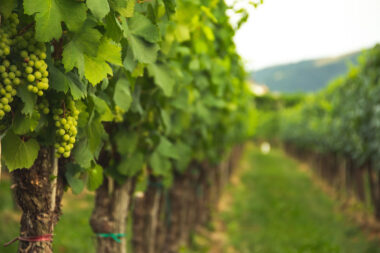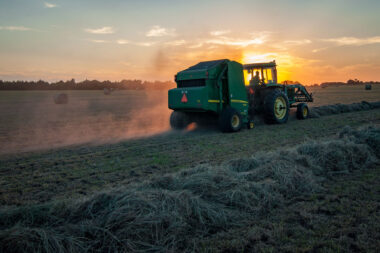In recent years, the global decline in natural pollinators, particularly bees, has raised concerns about the potential impact on agriculture and biodiversity. As a response to this critical issue, scientists and engineers have turned to innovative solutions, giving rise to the development of robotic bee pollinators. This article delves into the emergence of these technological marvels and explores their potential implications for addressing pollination challenges in agriculture and supporting biodiversity.
The Decline of Natural Pollinators:
Natural pollinators, especially bees, play a crucial role in the reproduction of flowering plants, including many crops that form the backbone of global agriculture. However, factors such as habitat loss, pesticide use, climate change, and diseases have led to a decline in bee populations. This decline poses a direct threat to food production and the delicate balance of ecosystems that rely on pollination for plant reproduction.
The Rise of Robotic Bee Pollinators:
In response to the pollination crisis, researchers and engineers have been developing robotic bee pollinators. These miniature machines are designed to mimic the natural pollination process and step in where traditional pollinators face challenges. These robotic bees are equipped with advanced technologies, including artificial intelligence, computer vision, and delicate robotic arms, to simulate the intricate movements of their biological counterparts.
Application and Implementation of Robotic Bee Pollinators
Precision Agriculture:
Robotic bee pollinators can be deployed in precision agriculture to enhance the pollination of specific crops, especially those with high economic importance and reliance on pollination, such as almonds, apples, and certain vegetables. This targeted approach ensures efficient pollination where it is needed most, contributing to increased crop yields and improved quality.
Greenhouse Farming:
Controlled environments like greenhouses can benefit significantly from the use of robotic bee pollinators. In enclosed spaces, these robots can navigate systematically, providing precise pollination services to crops within the greenhouse. This controlled setting allows for optimal conditions for both the crops and the robotic pollinators.
Crop Diversity and Resilience:
Robotic bee pollinators can play a vital role in promoting crop diversity by ensuring the pollination of a wide range of crops. This diversity is essential for global food security and helps in creating more resilient agricultural systems that are less susceptible to disruptions caused by the decline of specific natural pollinator species.
Large-Scale Agriculture:
For large-scale agricultural operations, the deployment of fleets of robotic bee pollinators can provide a scalable solution. These robots can work collaboratively to cover expansive crop fields efficiently. Their ability to operate continuously, regardless of weather conditions, offers a practical advantage over natural pollinators.
Remote and Challenging Environments:
Robotic bee pollinators can be employed in regions where access is challenging for natural pollinators. Remote or inhospitable environments, where natural pollinators may struggle to survive, can benefit from these robotic solutions. This includes areas with extreme weather conditions or locations far from traditional agricultural regions.
Biodiversity Conservation:
Implementation of robotic bee pollinators can contribute to biodiversity conservation efforts by alleviating the pressure on natural pollinator populations. Preserving diverse ecosystems is crucial for the health of the planet, and robotic pollinators can assist in maintaining the delicate balance of various species.
Research and Education:
Robotic bee pollinators can serve as valuable tools for research and education in the fields of robotics, agriculture, and environmental science. Their deployment allows scientists to study pollination patterns, crop responses, and ecological impacts, providing valuable insights for future advancements.
Here’s an overview of the key software and hardware components required for the rise of robotic bee pollinators:
Hardware Components:
Chassis and Body:
Material: Lightweight and durable materials, such as carbon fiber or lightweight alloys, are used to construct the body of the robotic bee. The design mimics the size and shape of a natural bee for efficient pollination.
Wings and Actuators:
Actuation Mechanism: Miniature actuators or artificial muscles are used to replicate the wing movements of natural bees. Piezoelectric or electroactive polymers can be employed for precise and rapid wing flapping.
Sensors:
Camera and Visual Sensors: High-resolution cameras and visual sensors are integrated to enable the robotic bee to detect and recognize flowers, navigate, and avoid obstacles.
LiDAR (Light Detection and Ranging): LiDAR sensors help in mapping the surroundings and avoiding collisions.
Infrared Sensors: Used for precise distance measurement and obstacle avoidance.
Power Source:
Battery: Lightweight and high-energy-density batteries power the robotic bee. Advancements in battery technology are crucial to ensure longer flight durations and increased operational efficiency.
Communication Module:
Wireless Communication: Enables communication between multiple robotic bees and a central control system. Communication protocols should be reliable and low-latency.
Navigation System:
GPS (Global Positioning System): GPS or other navigation systems help in tracking the location of the robotic bee and facilitating precise navigation.
Pollen Collection Mechanism:
Soft Grippers or Brushes: Mimicking the natural pollen collection process, soft grippers or brushes are integrated to collect and transport pollen from one flower to another.
Control System:
Onboard Microcontroller or Processor: A microcontroller or processor controls the overall operation of the robotic bee, including flight patterns, navigation, and communication.
Software Components:
Flight Control Software:
Flight Algorithms: Complex algorithms control the robotic bee’s flight patterns, taking into account factors like wind speed, flower location, and obstacles. These algorithms ensure stable flight and efficient pollination.
Computer Vision and Image Processing:
Object Recognition: Computer vision algorithms enable the robotic bee to recognize flowers and other objects in its environment.
Path Planning: Algorithms for path planning ensure efficient navigation among flowers, avoiding collisions and optimizing pollination routes.
Artificial Intelligence (AI):
Machine Learning Models: AI models can be trained to optimize pollination strategies based on factors like flower types, environmental conditions, and past experiences.
Communication Protocol:
Wireless Communication Protocol: A reliable communication protocol is essential for real-time data exchange between robotic bees and the central control system.
Sensor Fusion:
Integration of Sensor Data: Software algorithms fuse data from various sensors, such as cameras, LiDAR, and infrared sensors, to create a comprehensive understanding of the robotic bee’s surroundings.
Autonomous Operation:
Decision-Making Algorithms: Autonomous decision-making algorithms enable the robotic bee to adapt to changing conditions, make informed decisions, and efficiently pollinate flowers.
Security Software:
Encryption and Authentication: Security measures, including encryption and authentication protocols, are essential to prevent unauthorized access to the robotic bee’s control system.
Data Logging and Analysis:
Data Logging Software: Logs data related to flight patterns, pollination success rates, and environmental conditions for analysis and improvement.
Potential Impact on Agriculture:
One of the primary advantages of robotic bee pollinators lies in their potential to ensure consistent and efficient pollination in agricultural settings. Unlike natural pollinators, robotic bees can operate in various environmental conditions and are not susceptible to factors like changing weather patterns or habitat loss. This adaptability could contribute to increased crop yields and greater agricultural resilience.
Additionally, the deployment of robotic bee pollinators could help address the specific challenges faced by crops that are heavily dependent on pollination, such as almonds, apples, and various fruits and vegetables. By ensuring reliable pollination, farmers may experience improved crop quality, reduced dependency on unpredictable natural pollinator populations, and enhanced overall agricultural productivity.
Supporting Biodiversity:
While the primary focus of robotic bee pollinators is on agricultural applications, their deployment may indirectly support biodiversity conservation. By relieving pressure on natural pollinator populations, these robotic counterparts can contribute to the preservation of diverse ecosystems. This is particularly important given the interconnectedness of various species in ecosystems and the cascading effects that changes in one population can have on others.
Challenges in Implementation:
While the application of robotic bee pollinators holds great promise, several challenges must be addressed during their implementation:
Energy Efficiency:
Ensuring that robotic bee pollinators are energy-efficient is crucial for their widespread adoption. Advances in battery technology, solar power, or other sustainable energy sources can contribute to addressing this challenge.
Cost-effectiveness:
The initial costs associated with developing and deploying robotic bee pollinators need to be balanced against the long-term benefits and increased agricultural productivity.
Integration with Ecosystems:
Ensuring that the deployment of robotic pollinators does not negatively impact local ecosystems and natural pollinator species is essential. Consideration must be given to prevent unintended ecological consequences.
Ethical Considerations:
The ethical implications of replacing natural pollinators with robotic alternatives require careful consideration. Striking a balance between technological innovation and ethical responsibility is crucial for the acceptance and success of these solutions.
The development of robotic bee pollinators represents a promising technological response to the ongoing decline in natural pollinators. While these innovative solutions have the potential to revolutionize agriculture and contribute to biodiversity conservation, it is essential to approach their deployment with caution, considering the associated challenges and ethical considerations. As the world grapples with the complex issue of pollination challenges, robotic bee pollinators stand as a testament to human ingenuity and the ongoing quest for sustainable solutions to safeguard our food supply and natural ecosystems.



